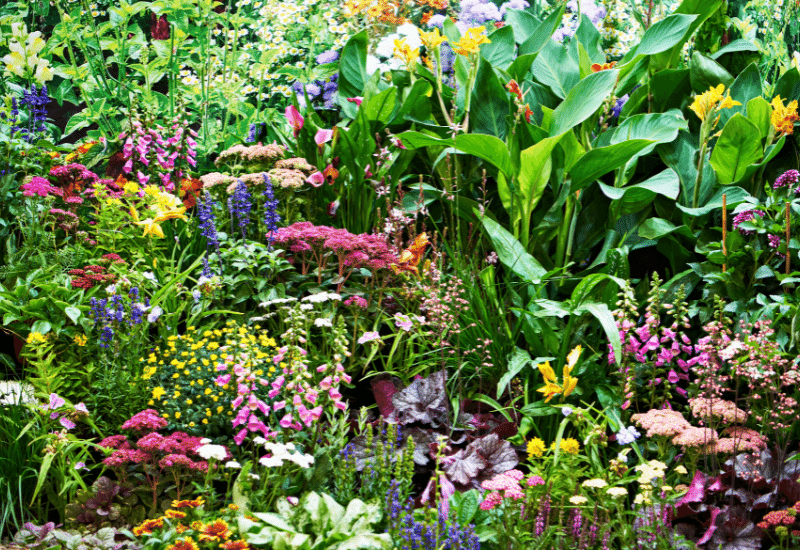
How can you resist the exotic elegance of tropical flowers? They offer the possibility of personalizing your outdoor space by bringing a touch of originality that you will not find everywhere.
Originally from Africa, Asia, or Central America, tropical plants delight us with their lush foliage, flamboyant often unusual, and intoxicatingly fragrant blooms in vibrant colors, ranging from pink to purple, passing through white or orange.
You’ve probably heard that you can’t grow tropical flowers if you live in colder regions? You’ve heard wrong, there are tropical gardens even in rainy Scotland.
Even though not all of these plants will survive outdoors through the winter, some will surprise you with their beauty and their resistance to frost or drought. If you live in warm climate zones, you can enjoy them outdoors in summer as annuals, then dig up the bulbs, rhizomes, or tubers and replant them in the spring.
But in cooler climates, you need to help these tender tropical blooms survive the winter by bringing containers inside, before the first frost of autumn.
To help you make your choice, here are 20 bright and exuberant tropical flowering plants that will make your head spin and burst with beauty in your little corner of greenery!
With practical tips on how to grow them, now you can enjoy their exotic blooms…
We may earn commission from links on this page, but it won’t cost you extra. We only recommend products we’ve personally used or believe will benefit our readers. Why Trust Us?
20 Tropical Flowers To Satisfy Your Need For Exoticism
From the the queen of tropical flowers Hibiscus to the dramatic birds of paradise, these exotic flowers come to us from distant lands, bring a touch of exoticism to your themed garden, a real invitation to travel.
Browse through the different types of tropical flowers below.
1. Passion Flower (Passiflora)

This wonderful and hardy tropical flowing purple vines takes its name from the fact that its originally shaped flower reminds us of the crown of thorn that was placed on Jesus’ head during the Passion.
Most species come from South America and Mexico, and the most famous, Passiflora caerulea, is known as blue passionflower for its color.
Passiflora is excellent on trellises, for gazebos and to cover fences with its rich foliage, its stunning flowers and, let’s not forget, even its delicious edible fruits. It is fairly easy to grow and also to find in many garden centers or online.
2. Lotus (Nelumbo and Nymphaea ssp.)
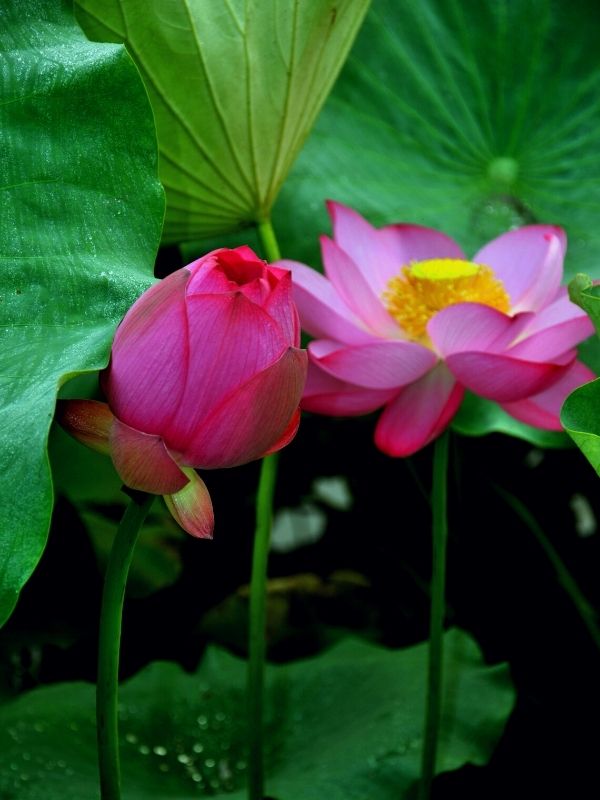
Among all tropical flowering plants, lotus has a special place. This is not just because it has wonderful flowers of many colors, because it also has beautiful, round and waxy leaves and it grows in water… Lotus is also a spiritual symbol in Buddhism and Hinduism.
So, if you have a pond, and you want it to blossom with flowers that can turn any garden into an exotic paradise, lotus may do for you.
Not all lotus species and varieties are good for temperate climates: most need hardiness zones 8-10 and up to 12, but some can grow even in colder zones, like Lotus Pekinensis Rubra (zones 4-11), Lotus alba (7-11) and Lotus ‘Thousand Petals’ (4-11).
But there’s also an alternative: some Nelumbo species, or Indian lotus, are hardy to US zones 4-11 and it has many species.
3. Jasmine (Jasminium ssp.)
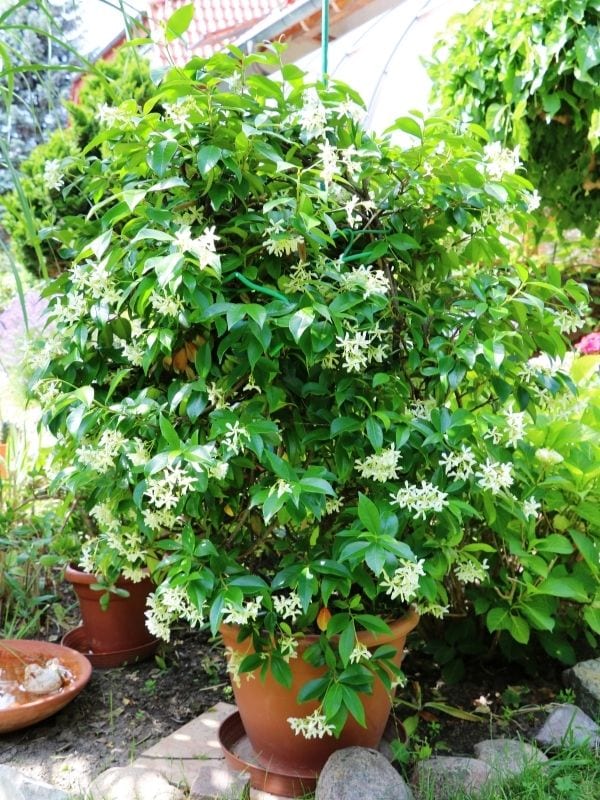
What’s better than the sweet scent of jasmine when you pass by a hedge or carpeted wall? This beautiful long flowering tropical plant of Arabian origin, whose meaning is “gift from God”.
And its lingering and unmistakable scent is certainly a gift for your garden as well as passers-by.
Original of tropical and subtropical regions of Eurasia, but also Oceania, this plant is easy to grow and propagate, and it can turn even the most boring spot or wall into a perfumed Milky Way of flowers carpeting the lush leaves of a vertical garden.
4. Magnolia (Magnolia ssp.)
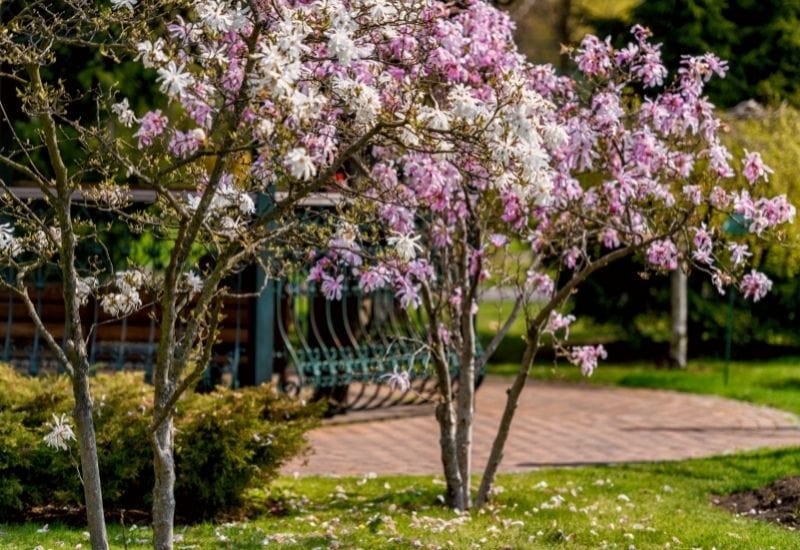
The elegance of magnolias, with glossy leaves and scented flowers mixes an exotic touch to your garden to that elegance that shouts out, “Japan!”
It is hard to find a tree that has such a distinctive look and such defined Eastern look that, even on its own, it can bring a touch of the Empire of the Rising Sun to any garden.
These plants are very generous with their blooms and, if you don’t have a huge garden, there are even small and dwarf varieties you can grow.
They have what is known as a “disjoint origin” as they grow spontaneously in parts of the world that are not connected.
Primarily, they come from Southeast Asia, but some species are native of South and Central America, the Caribbean Islands and even some regions of Eastern North America, like Florida.
5. Hibiscus (Hibiscus ssp.)
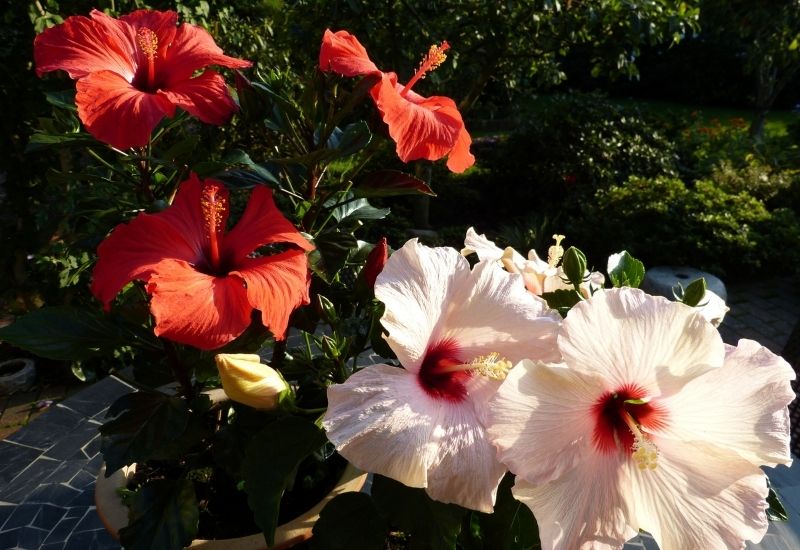
A tropical plant we associate with Hawaiian hospitality, generous with its flowering and very easy to grow, hibiscus has become one of the most common exotic plants in gardens all over the world.
You can keep your hibiscus as a small tree, as a shrub or even as part of a hedge.
These beautiful, iconic flowering plants will regale you with large, brightly colored flowers with those long pistils we have all come to know and love.
They are easy to find in flower shop and you can even grow them from seed or cutting.
Closely related to common mallow, Malva, its exotic cousin, hibiscus, can also be used for teas as this plant has medicinal properties that lower blood pressure and sugar levels.
The most common varieties in gardens are Hibiscus syriacus and Hibiscus rosa-sinensis, but there are 200 species to choose from!
6. Bromeliad (Bromeliaceae family)
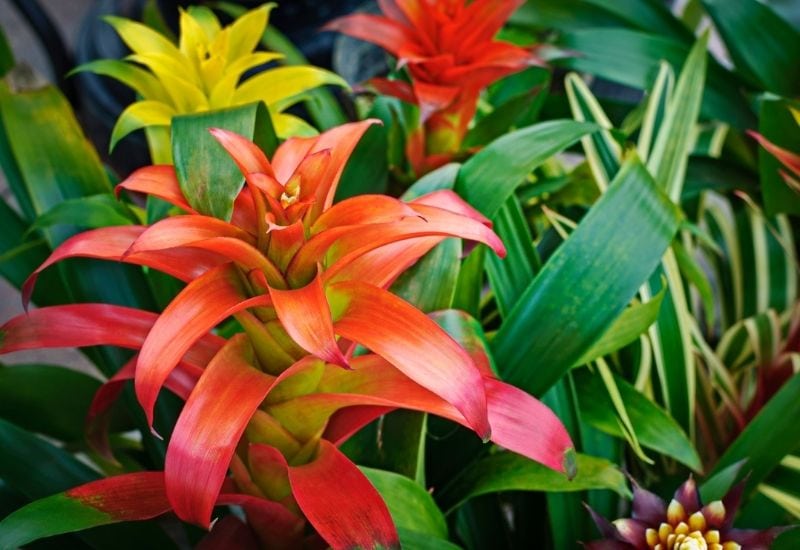
Bromeliad is a flowering succulent plant that’s enjoying a worldwide revival. Now, there are even bromeliad gardens around the world.
Bromeliads are loved for their colorful and originally shaped brats, those modified leaves at the top of the plant that look like otherworldly exotic flowers. However, they also flower regularly, both outdoors and indoors.
Bromeliads are a large family of plants, known as Bromeliaceae, comprising 3590 different species, and hailing from tropical and subtropical America, with one exception, Pitcairnia feliciana, which is native of west Africa.
These plants are epiphytes and lithophytes, which means that they grow on tree branches and on rocks. This makes them ideal to decorate old trunks, stone features, walls, and to grow out of even very small spaces.
7. Cilia (Clivia miniata)
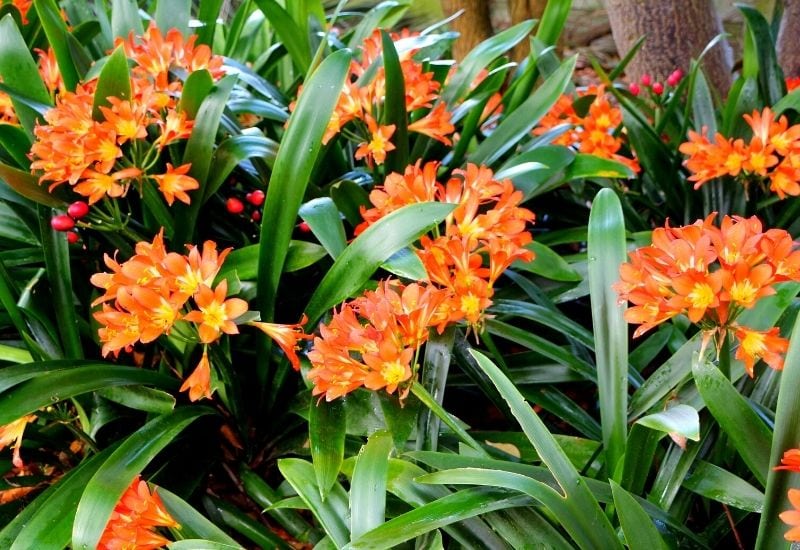
How can you resist the bright red and bell shaped flowers of Clivia miniata, and her long, elegant and glossy leaves? This flowering plant from South Africa is now a household name in gardens and as a houseplant all over the world.
Because it likes to be in the fresh open air during its dormancy, people tend to keep it outdoors before it blossoms, than thane it indoors.But in some areas, you can even grow it as a garden plant.
8. Calla (Zantedeschia)
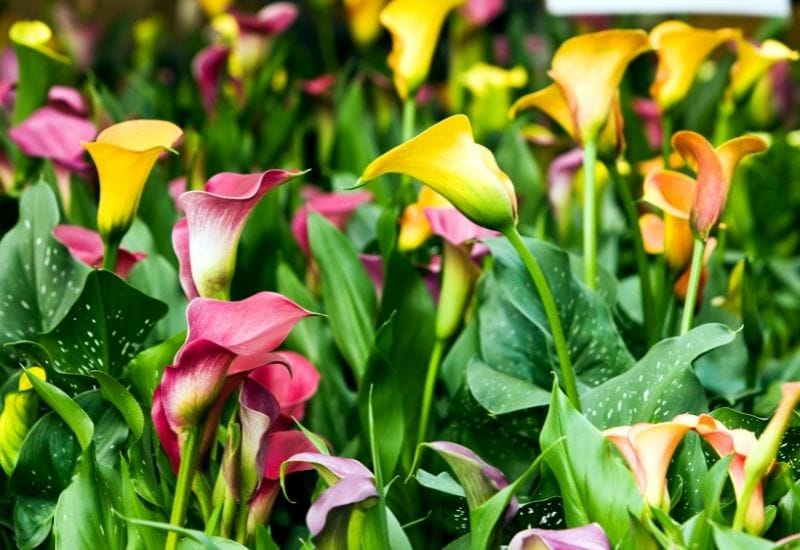
The elegant spathes, or colored and modified leaves that surround the actual inflorescence, or spandix, of calla, its ornamental broad leaves and the fact that it is easy to grow have made Zantedeschia, as botanists call it, a very popular tropical flower indeed.
Even if you can find it in gardens and as a houseplant in many temperate regions, Zantedeschia is actually from Africa.
It is easy to care and to bring to bloom. And it has also become one of the most popular cut flowers.
9. African Lily (Agapanthus ssp.)

The lily of the Nile, as Agapanthus is also called produces large, round inflorescences that grow on long stems rising from rich, thin and long leaves.
So, its decorative value comes from both flowers and leaves.
The Agapanthus africanus species has many hybrids and cultivars now, so, the choice of varieties of this plant is fairly large.
It can grow well in gardens, borders and flower beds, and it is a very easy tropical plant to grow.
10. Bird of Paradise (Strelitzia)
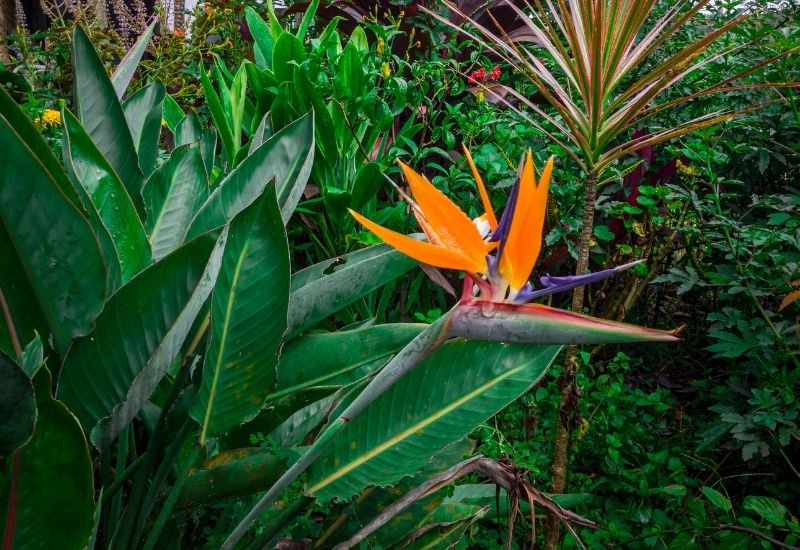
If you want a flowering plant with a uniquely exotic flower that can make any green space look tropical and you live in a fairly warm region, then think seriously about Strelitzia, or bird of paradise.
The name of this African plant comes from the fact that the flower resembles the famous bird, but it’s long, fleshy and waxy leaves too add an architectural dimension to any garden.
It has now become common in outdoor gardens in California (it is the floral symbol of Los Angeles), the Mediterranean and other warm regions of the world.
There are five species of this genus: Strelitzia reginae (the most famous), Strelitzia caudata (white with some blue), Strelitzia alba (white), Strelitzia nicolai (blue and white) and Strelitzia juncea (orange and blue flowers, like reginae, but with long, spear like leaves).
11. Bougainville (Bougainvillea ssp.)
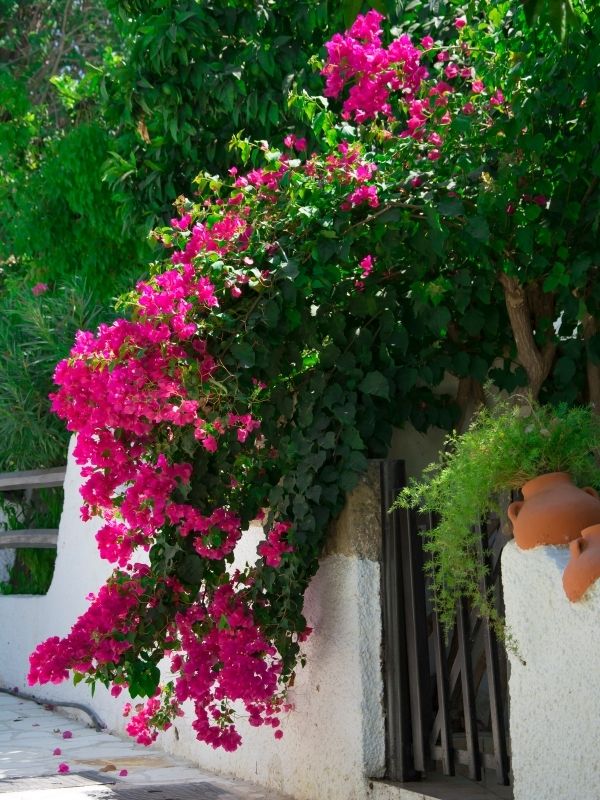
Bougainville is sun loving tropical flowering vine which can carpet whole walls and tall fences with its bounty of flowers for long periods. It is a climber, a vine actually, from South America that can grow to a whopping 40 feet (12 meters) in height, and it has become ubiquitous in Hispanic, South American and Mediterranean gardens.
In fact, it has become an almost symbolic flower of the Mediterranean, even if it is not native there.
It is a very strong plant that will grow with little care, and it is even perfect for urban spaces; you will, in fact, find it climbing walls, framing grand entrances to villas and bringing colors and vibrancy in public gardens.Of course, it is far too big to grow indoors, but it is excellent for large terraces, gazebos etc.
12. Indian Shot (Canna indica)
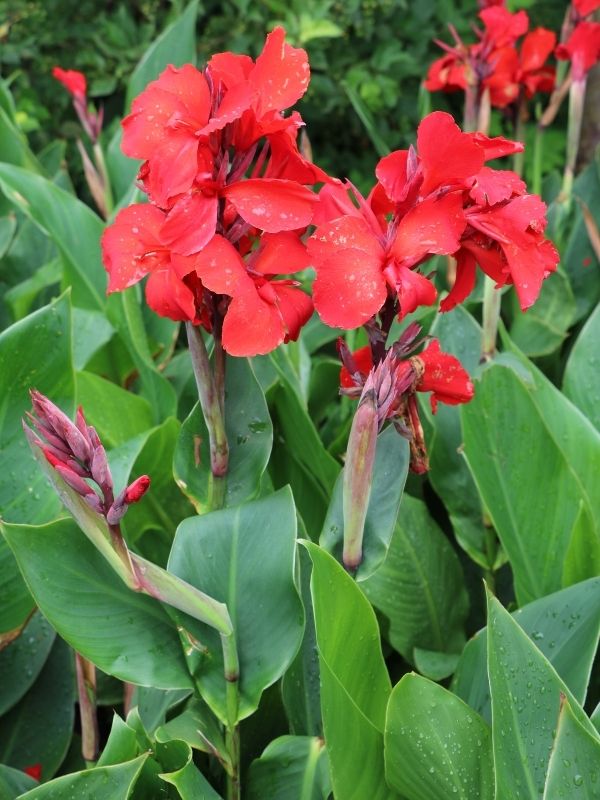
Having Indian shot in your garden is like having a painter of tropical colors to liven up your flower beds every with exotic leaves and bright and bold flowers.
In fact, the lines, shape, colors and general complexion of this plant bring to mind the paintings of Gauguin, or the abstract Nature depicted in L7M’s street art…
Canna indica is yet another easy to grow tropical flowering plant which has spread from Central America, Mexico and the West Indies to many gardens all over the world, and it has even naturalized in many continents.It will soon grow into large clumps of great architectural beauty and lively colors.
13. Scarlet sage (Salvia splendens)
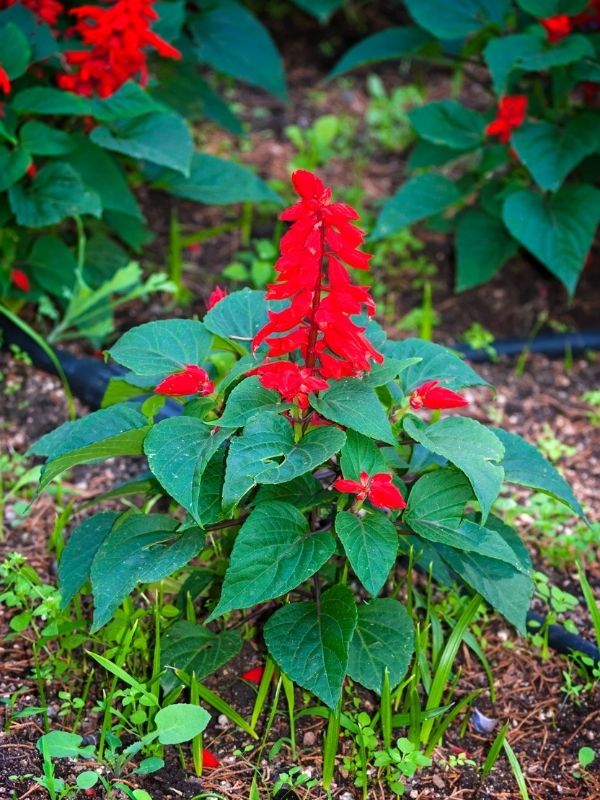
If you want purple dashes of color in your garden, this Brazilian cousin of common sage is perfect for any corner of your garden that needs a lift.
Also known as tropical sage, it comes from high altitudes in the South American country, which makes it fairly hardy and suitable for temperate gardens.Scarlet sage is easy to grow and you can use it as a carpeting plant as it will spread fast. Ah, I was forgetting… it will bloom from spring to fall!
14. Ginger (Zingiber officinale)
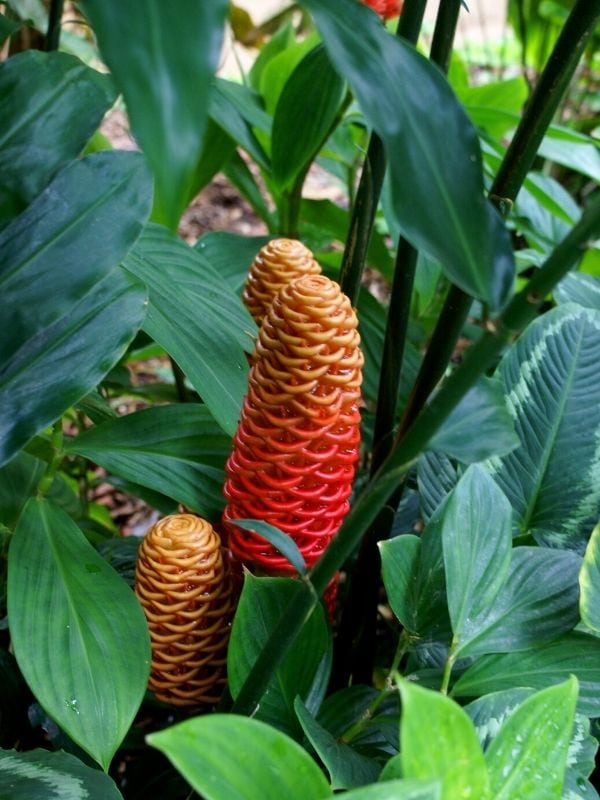
We all know ginger as a spice, or food, but it is also a stunningly beautiful tropical flowering plant. It has been known to the West since before the Romans, but it originates from Southeast Asia.
The flowers of the ginger plant are of various shapes, according to the species, but always exotic looking and original. So, beehive ginger (Zingiber spectabile) has this name because…
Well, you guessed it, its flowers look like a beehive. Indian ginger’s flower looks a bit like a purple pine cone, Hawaiian ginger’s like a feathered plume…
15. Bat Plant (Tacca integrifolia)
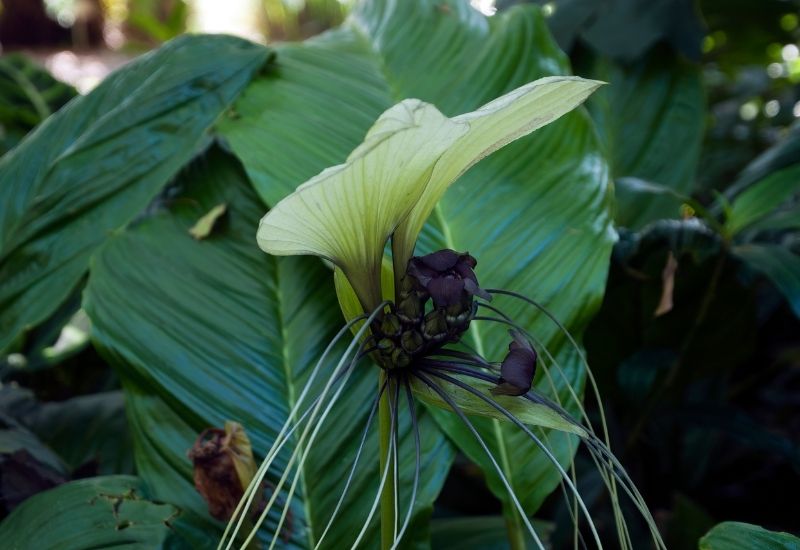
Are you ready for a crazy looking exotic plant with unbelievable flowers? If you want a special tropical plant and you live in a warm region, then have a look at Tacca iegrifolia, called bat plant because its flowers look like bats to some people, and, trust me, they are like no flower you have ever seen.
It is from subtropical Central Asia, originally (Thailand, Cambodia, India, Sri Lanka etc…)
This plant’s flower has two huge bracts, which look like petals, or the lids of Nepenthes, above the actual flowers, that turn into berries and have long filaments, like the whiskers of cats, that fall from them.
The vivid purple color of the flowers is partly taken up by the bracts, which then turn white towards the margins. Just stunning!
16. Protea (Protea cynaroides)
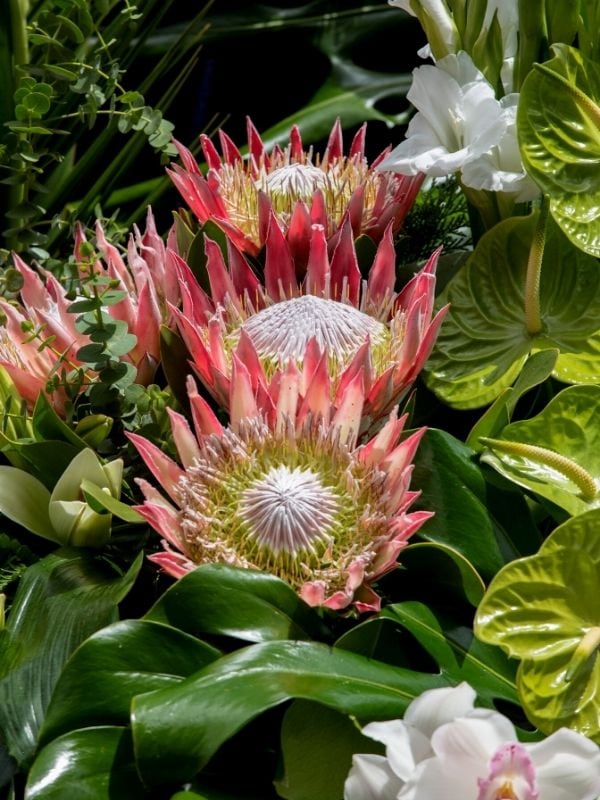
With a very exotic and tropical look, Protea cynaroides is a great plant if you want that “original” touch in your garden, on your terrace or even at home.
The flowers of this plant are amazing, looking a bit like that of the thistle, but at the same time unique and out of the ordinary.
This flowering plant comes from South Africa, but, despite the fact that it has a very tropical and sunny feel to it, it tolerates both low temperatures and spells of drought, so, it has the best of both worlds.
17. Curcuma (Curcuma longa)
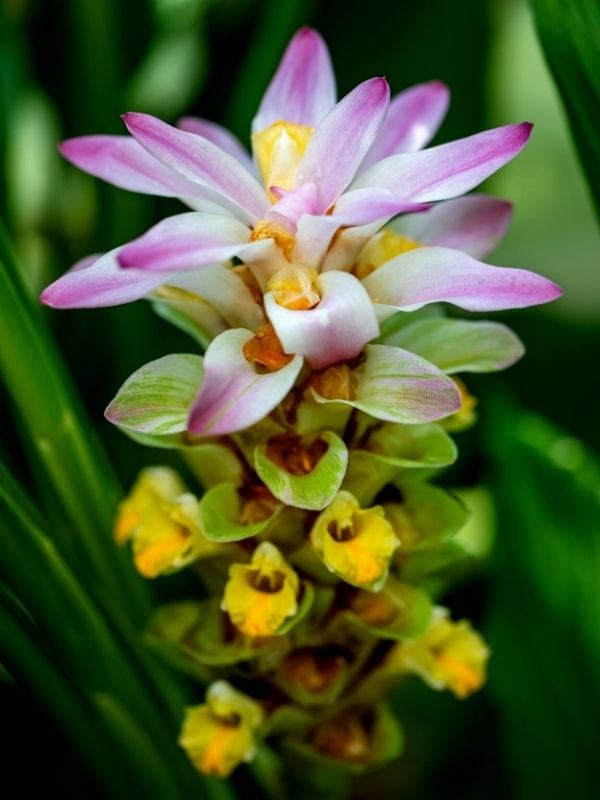
The flowers of curcuma, mainly known as an exotic spice, are just stunning; they grow on long stems and are sheltered by colorful bracts that may remind you Chinese pagodas, at least they do to me.
The plant too is very decorative, with broad, ribbed and lanceolate leaves; this plant will form clumps of lush green with exotic and brightly colored flowers rising between the leaves. The tropical look is guaranteed with Curcuma longa, a famous Asian plant.
18. Rose Grape (Medinilla magnifica)
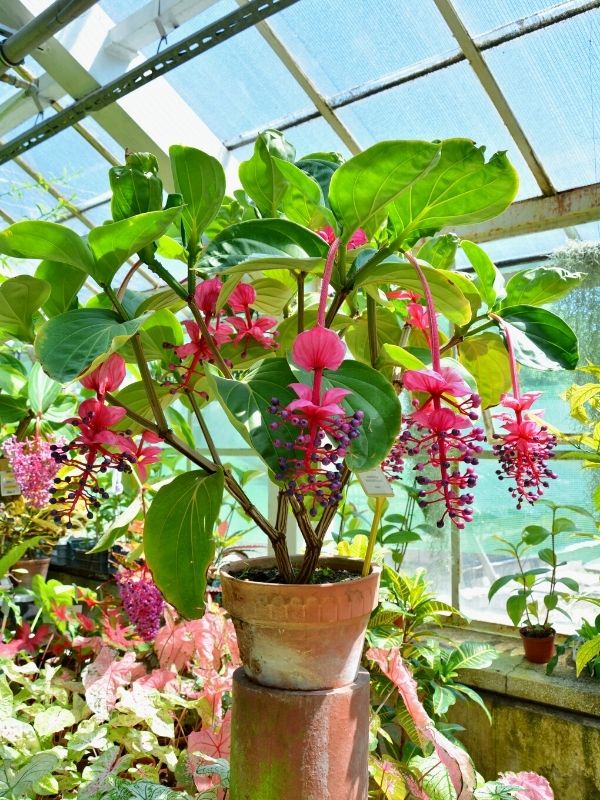
This tropical flowering plant from the Philippines will blow your mind, with its long, beautiful grape shaped inflorescences, large, ribbed and oval leaves and absolutely stunning presence…
The flowers come in long “grapes”, called panicles, up to 12” (30 cm) in length cascading from large pink bracts. This plant is so beautiful that it won the Royal Horticultural Society’s Award of garden Merit in 2015.
19. Blood Lily (Scadoxus multiflorus)
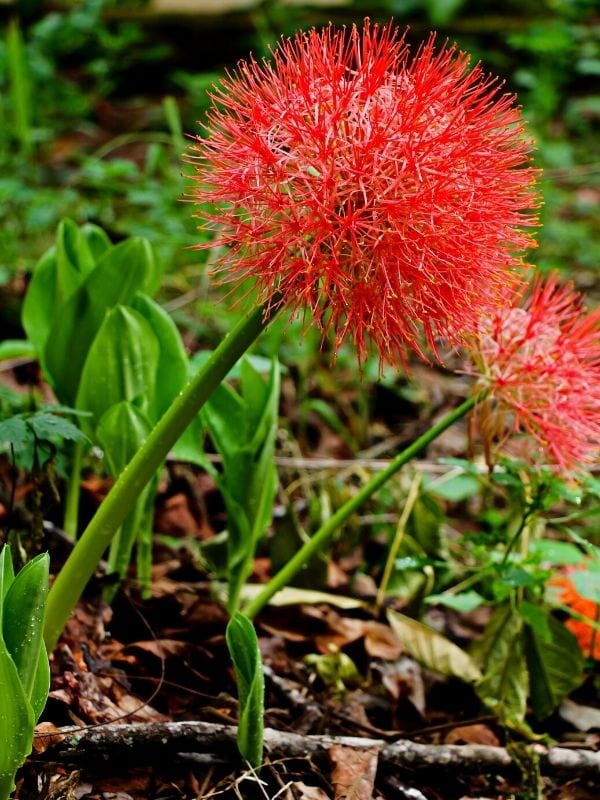
If you want a lesser known tropical plant that produces beautiful red “balls” of flowers, then blood lily is a great choice for your garden.
This plant from Sub-Saharan Africa forms globe shaped umbrels of up to 200 flowers each, of a very bright scarlet red color, and they can be up to 6” in diameter (15 cm).Clumps of blood lily in your garden will give it an elegant but exotic look.
20. Blanket Flowers (Gaillardia ssp.)
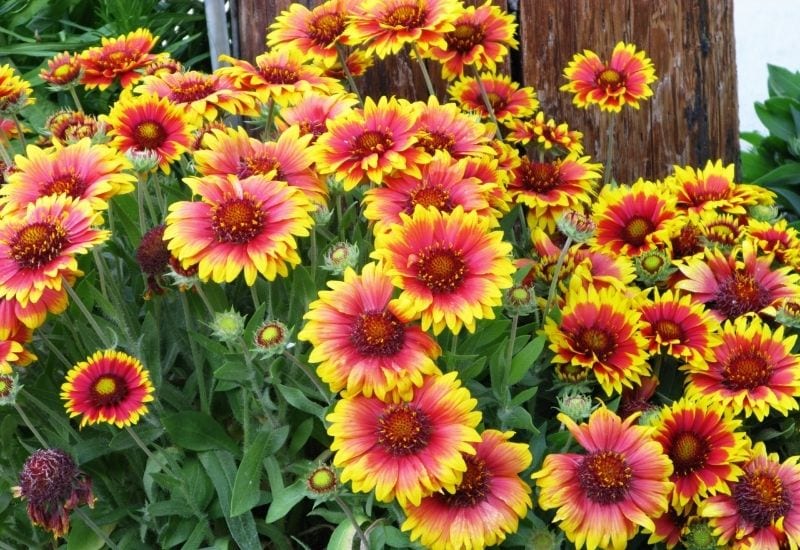
Related to the common aster and sunflower, Gaillardia is a genus of plants from North and South America which brings to mind the blankets of Native Americans…
In fact, these flowers are good in beds, pots and, in some cases, also as small shrubs.
They are very easy to grow and they have a wide range of colors too.
A Tropical Corner in Your Home or Garden
There’s something special about the “tropical look” of plants and flowers: they are bold, original, eye catching… But they also give a sense of abundance, of the generosity of Nature…
So, it is only natural that you want to have tropical plants near you, maybe in your living room, or on your terrace and, why not, even in your garden.
Not all tropical flowering plant will grow everywhere, but some are quite hardy indeed and, with a vast range to choose from, you can certainly find one that is good for you!

Written By
Amber Noyes
Amber Noyes was born and raised in a suburban California town, San Mateo. She holds a master’s degree in horticulture from the University of California as well as a BS in Biology from the University of San Francisco. With experience working on an organic farm, water conservation research, farmers’ markets, and plant nursery, she understands what makes plants thrive and how we can better understand the connection between microclimate and plant health. When she’s not on the land, Amber loves informing people of new ideas/things related to gardening, especially organic gardening, houseplants, and growing plants in a small space.
